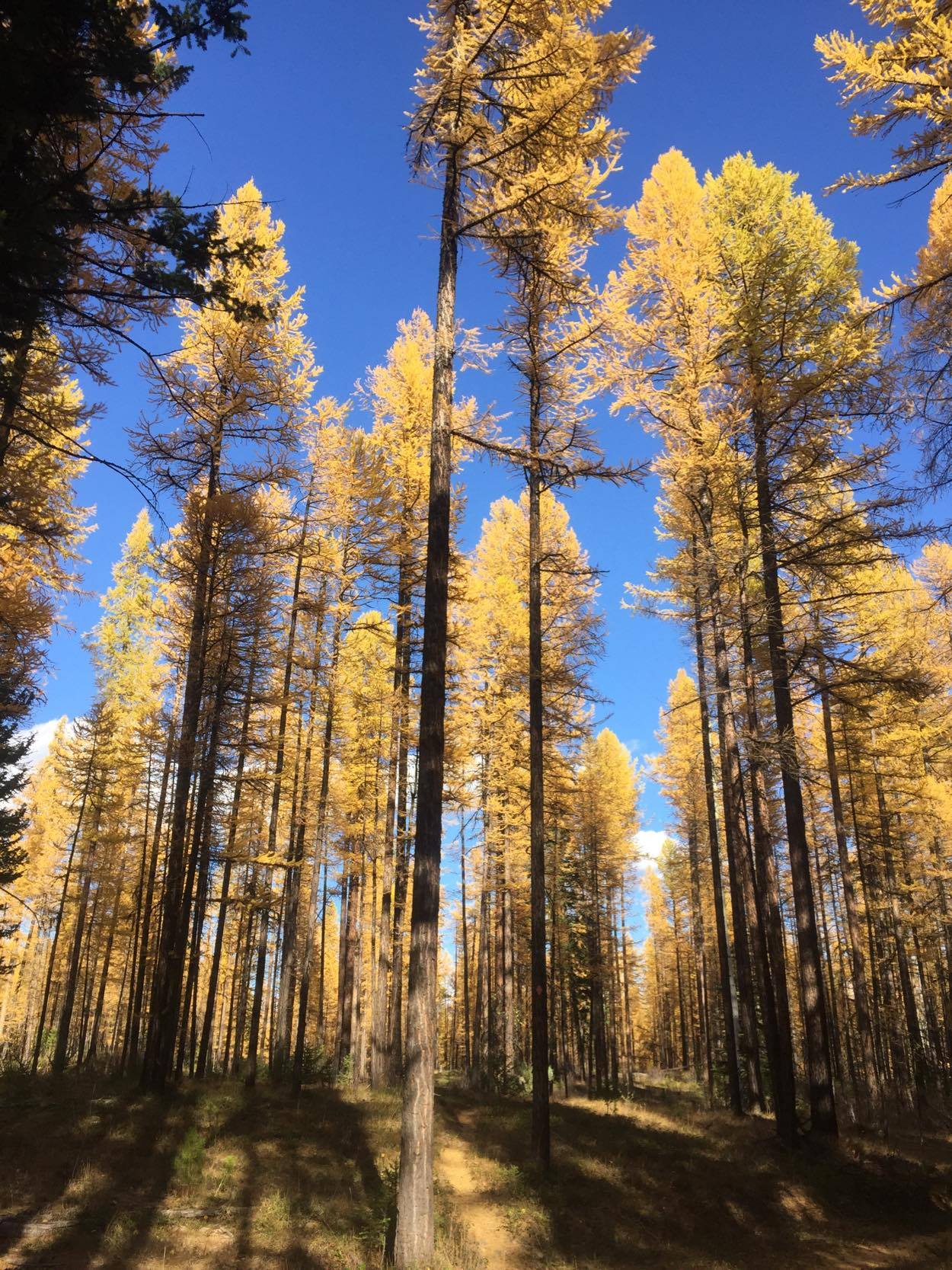The Needles of Change - Chasing the Larch
The needles of change,
A fleeting season, fall brings our region an abundance of colour and change. Arguably the most spectacular sight being the brilliant yellow of the Larch trees. They leave golden footpaths, and speckled hillsides in the forested areas of Cranbrook and Kimberley.
Finding the Larch in our area is easy! You can choose to drive, walk or hike your way to them. However, each year produces different weather, and a good rule of thumb to finding Larch in season is based on elevation. The higher your adventure, the sooner the needles will yellow. Mid September to mid October is the window to chase the Larches.
HIKE
Tanglefoot Lake is the top of my list to view the Larch trees. Follow them from the foot of the Mause Creek tarns all the way up the pass, with welcomed views of near and distant larch trees as you descend a winding trail to the alpine waters. This hike is truly a gem of the area and should be added to your bucket list hikes!
How to get here
Teepee Mountain is a close second - but with much more effort, the views may taste a little bit sweeter. Making your way through the tree line, you will start to be greeted by larch as you round the first of many rocky corners. Once ascending a loose summit of Mount Stevens, the views start to open up with distant yellow surrounding alpine tarns below. Let them motivate you as you push to the top of Teepee Mountain!
How to get here
.jpg)
Perry Creek is a tipping point to a wealth of Larches. The forest service road will lead you deep into the forests hiding Richmond and Goldrun Lakes. These two lakes are close in proximity and easily visited in a single day. A winding road follows along winding rivers and through historic mining territory, some of which are still active claims today. Larches can be seen along your drive as well as at the lakes.
How to get here
WALK

South Star Trails are home to plentiful Larch trees, and the lower elevation of this area keeps them around a little bit later than the hikes mentioned previously. The Larch here are tall and majestic, choose any direction from the trailhead to find them towering along the skyline.(image taken on Oct 20) Photo credit to: Barbara Robertson
How to get here
DRIVE
Pictured here is the quite possibly the fluffiest Larch I have ever encountered! Matthew Creek is home to some incredible golden beauties just like this. Better news still, they are right along the roadside. Can you find this tree? Follow the road to Horsebarn Valley around dinner time to see them glow in the early evening light.
How to get here
Want to learn more about Larch trees?
Source: Wikipedia The larches are important forest trees of Russia, Central Europe, United States and Canada. They require a cool and fairly humid climate and for this reason they are found in the mountains of the temperate zones, while in the northernmost boreal zones ones they are also found in the plain. At gen. Larix belong to the trees that go further north than all, reaching in the North America and Siberia the tundra and polar ice. The larches are pioneer species not very demanding towards the soil and they are very long-lived trees. They live in pure or mixed forests together with other conifers.
Alana Krushen is a born & bred Kootenay lover, outdoor enthusiast, and digital artist practicing Photography and Design here in the East Kootenays. She is passionate about the communities of Cranbrook & Kimberley and the natural beauty that encompasses them.
To view Alana's work, or learn more about her, visit her website here.

